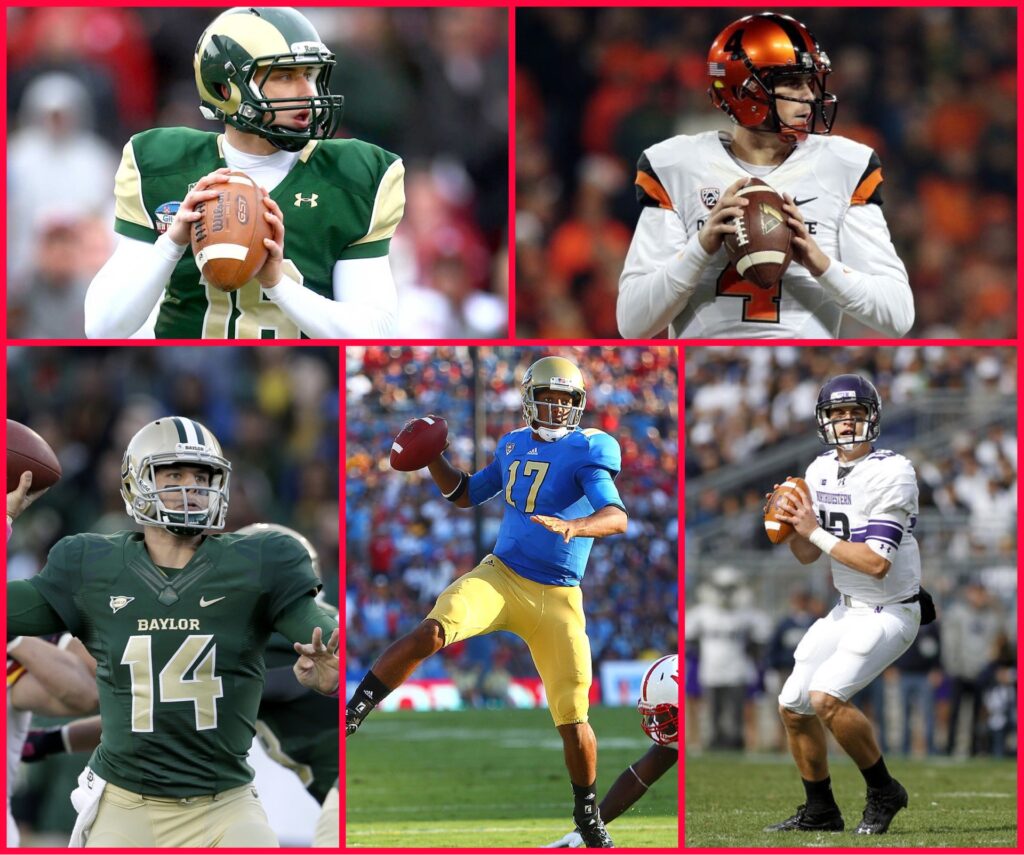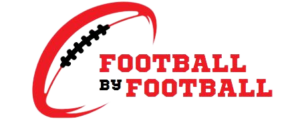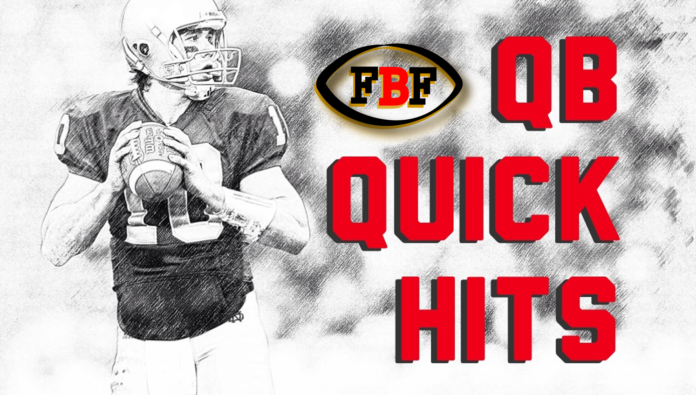Leading up to the 2015 NFL Draft, there was widespread anticipation of significant team movements, all in pursuit of securing the talents of the Heisman Trophy winner, Marcus Mariota.
Trade talks even reached the point where quarterback Philip Rivers was rumored to be on the verge of leaving the San Diego Chargers, possibly in exchange for the 2nd overall pick in the draft.
In the minutes and hours leading up to the Tampa Bay Buccaneers’ selection, the media added more teams to the trade speculations.
Out of nowhere, Cleveland appeared to be gearing up to leapfrog to the 2nd overall pick by reportedly offering their 12th and 19th selections in the draft.
Simultaneously, the New York Jets were rumored to be considering trade scenarios, with the possibility of including Pro Bowl defensive end Mo Wilkerson, who had been voicing his discontent with the lack of progress in his contract negotiations.
Consistent with earlier speculations, Eagles’ head coach Chip Kelly engaged in discussions with Tennessee regarding a trade to move up from their 20th pick to the 2nd spot to secure Super Mario’s services ahead of any other interested parties.
However, the asking price soon became exorbitant, leading Philadelphia to back away from the negotiations.
In the end, all the dramatic buildup and speculations amounted to nothing more than exploratory conversations.
A significant trade did not materialize until the 15th pick of the draft, when the San Francisco 49ers exchanged their pick with the San Diego Chargers, receiving the 1st and 4th round selections (#17 and #117).
Despite the persistent rumors of Rivers’ departure, the Chargers bolstered their offense by acquiring a Heisman finalist in running back Melvin Gordon.
In reality, the teams involved acted in the best interest of their franchises, ultimately disregarding the trade rumors.
With the passage of time since the 2015 NFL Draft, let’s shift our focus to the rookie quarterbacks drafted and the circumstances they found themselves in.
#1 Overall Jameis Winston, FSU – Tampa Bay Buccaneers
From the very beginning, this appeared to be a perfect match, with one notable exception—Winston’s off-field issues.
A national champion and a Heisman Trophy recipient, Winston hailed from a university just 200 miles away. It was hard to imagine a more enticing prospect to ignite the fan base, particularly one yearning for a franchise quarterback.
There was little doubt in anyone’s mind that among the quarterbacks in this draft class, Winston was the one most prepared to step into an NFL huddle and take the lead.
His impressive track record over two years at FSU spoke volumes (a remarkable 26-1 win-loss record).
The drop in his statistics from his redshirt freshman year to his redshirt sophomore year (2013: 67% completion rate, 40 touchdowns, 10 interceptions; 2014: 65% completion rate, 25 touchdowns, 18 interceptions) tended to overshadow the fundamental truth that Winston was a winner.
This decline in performance could also be attributed in part to the departure of Winston’s favorite wide receiver, Kelvin Benjamin. Benjamin, who had an outstanding rookie season with the Carolina Panthers, proved to be a formidable force in his debut year.
In contrast, the Seminoles found themselves lacking the big target with significant playmaking abilities that they had in their 2013 national championship season.
Winston, however, now had the advantage of not just one but two dynamic wide receivers in Vincent Jackson and Mike Evans.
If Winston could establish a similar rapport with Evans and Jackson, he would undoubtedly emerge as the early frontrunner for the Rookie of the Year accolade.
#2 Overall Marcus Mariota, Oregon- Tennessee Titans
In this year’s draft, Marcus Mariota emerged as the primary beneficiary of the proceedings.
Numerous scenarios revolving around Mariota and the coveted #2 pick were discussed, but it was the most enticing and advantageous scenario that ultimately played out for the young quarterback.
Mariota received the #2 overall selection with the explicit intention of becoming the starter from Day 1. This development carried immense significance, particularly for his self-assurance.
Preceding the draft, there were lingering doubts regarding Mariota’s ability to adapt to the nuances of an NFL-style system. However, the Titans’ decision to pick him at #2 left no room for doubt; they had unwavering confidence in him.
For any fledgling quarterback, making the transition to the NFL entails grappling with more criticisms of one’s limitations than acknowledgments of potential.
Handling the prevailing negativity associated with the position in the NFL can be a formidable challenge. Nevertheless, a young player’s confidence can soar when they realize they have the unwavering support of the entire organization.
From a financial perspective, Mariota found himself in a favorable position, with a more substantial guaranteed signing bonus and overall salary due to his high draft position.
Had he slipped in the draft, these financial incentives could have significantly diminished. This is a circumstance I am familiar with, having experienced it myself.
The foremost question surrounding Mariota’s future pertains to the type of offensive system the Titans will employ to make the best use of his skill set.
Will it involve more shotgun formations? More no-huddle plays? Mariota, however, couldn’t have landed in a better situation for his transition to the NFL.
Head Coach Ken Whisenhunt is renowned for his adeptness at maximizing the potential of his quarterback proteges, a list that includes Ben Roethlisberger, Kurt Warner, and Philip Rivers.
Now, Whisenhunt has the opportunity to shape this fledgling quarterback into an NFL signal-caller who can flourish in his offensive scheme.

#75th pick (3rd Rd) Garrett Grayson, Colorado State – New Orleans Saints
Among the prospects in this year’s draft, one of the names that received the least recognition was the third quarterback chosen in this year’s class.
The most pressing question regarding the depth of the QB class this year was resolved when the second round of the draft concluded without a quarterback being selected.
The consensus among scouts and coaches was that, beyond Winston and Mariota, there were few players believed to possess the capability to start in the NFL.
The New Orleans Saints’ choice further supports this notion, as Garrett Grayson will find himself in a position behind one of the NFL’s most prolific passers in history, Drew Brees.
While this arrangement will undoubtedly aid in Grayson’s development and adaptation to the NFL game, it’s improbable that we will see him on the field anytime in the near future.
This situation might raise more concerns for veteran backup Luke McCown than anything else.
#89th pick (3rd Rd) Sean Mannion, Oregon State- St. Louis Rams
Mannion received the distinction of being labeled the second “most ready” quarterback in his class for the transition to the NFL game.
Guided by Mike Reilly, Mannion compiled remarkable statistics throughout his career in the Pac-12. His junior season’s performance thrust him into the spotlight and led some scouts to whisper about his first-round potential.
However, a less-than-stellar senior campaign left many scouts puzzled, attempting to ascertain the true extent of Mannion’s capabilities.
What sets Mannion apart is his football IQ and arm strength, attributes that equip him to handle whatever offensive coordinator Frank Cignetti introduces.
Mannion’s background in a “West Coast” system (not solely because OSU is located on the Pacific) should result in numerous parallels between the system he ran in college and the one Cignetti is set to implement with the Rams.
Physically, Mannion’s dimensions (6-6, 230 lbs.) are prototypical for most traditional drop-back NFL quarterbacks, bearing an uncanny resemblance to the current starter, Nick Foles (6-6, 243 lbs.).
Given their similar makeup and skill sets, any transition to the starting role, should the need arise during the season, is likely to be less complex, as they will likely be required to execute similar schematic duties.
#103 pick (4th Rd) Bryce Petty, Baylor – New York Jets
In terms of pure “arm talent,” Petty stands out as the quarterback with the most exceptional ability in this draft class.
This quality enables him to deliver the football from various angles and exhibit considerable arm strength, ensuring he can reach his intended target regardless of his lower body positioning.
Nevertheless, Petty faces the challenge of dispelling the notion that he’s merely a “system quarterback” due to his remarkable statistical achievements during his two years as Baylor’s starting QB.
The arrival of new head coach Todd Bowles, along with offensive coordinator Chan Gailey, bodes well for Petty.
Gailey’s approach should complement Petty’s strengths, as he can incorporate a substantial portion of his passing plays from the shotgun formation and adapt the offensive strategy to suit his quarterback’s capabilities.
Furthermore, Petty has the valuable opportunity to learn and develop under the guidance of one of the NFL’s most intellectually astute players, quarterback Ryan Fitzpatrick.
Fitzpatrick, an alumnus of Harvard entering his 11th season, has been recruited following a stint with the Houston Texans.
He will compete with former 2nd-round pick Geno Smith, with Fitzpatrick still recuperating from a fractured tibia sustained last season.
This situation seemingly paves the way for Smith to secure the starting role, although it also opens the door for Petty to make a strong initial impression if he performs impressively.
Regardless of the outcome, Petty finds himself in a favorable position to adapt to the NFL game and refine his skills without the immediate pressures of live game action.
#147th pick (5th Rd) Brett Hundley, UCLA – Green Bay Packers
Hundley’s selection in this year’s QB draft class raised eyebrows, as his athleticism ranked second only to Mariota, yet his pocket passing skills are far from NFL-ready.
General Manager Ted Thompson places a high premium on hand size, believing it enhances a QB’s grip on the football and, in turn, improves their throwing ability. Still, it’s difficult to grasp how this singular factor could translate into a 5th-round pick.
Upon scrutinizing Hundley’s 2014 season through film analysis, numerous inconsistencies in his pocket passing emerged.
A standout performance against ASU appeared promising, only to be followed by a lukewarm showing against Utah the subsequent week, where Utah’s defensive pressure and disguises rattled the UCLA QB.
Hundley seemed overwhelmed, contributing to 10 sacks during that game.
Critical mistakes in the game against Oregon led to the Bruins’ downfall, and a couple of weeks later, I found myself thoroughly perplexed by Hundley’s performance against Colorado.
What should have been an easy win turned into a two-overtime nail-biter, with Hundley’s ineffectiveness during regulation contributing to the struggle.
Hundley managed to regain his rhythm, delivering strong performances in wins over Washington and USC in the following weeks.
However, when the stakes were high in his final game at home in the Rose Bowl, Hundley faltered.
Stanford dominated UCLA throughout the contest, with Hundley managing just 146 passing yards. It was a puzzling performance, considering that the Bruins were arguably a stronger team.
Nonetheless, Hundley showcased his potential in the bowl game against Kansas State, concluding his collegiate career on a high note. To say that this journey was a roller coaster of ups and downs would be an understatement.
In the NFL, consistency is the hallmark of greatness. The truly great players exhibit the same level of performance day in and day out. Hundley’s path to NFL starting status will require him to become a more consistent passer.
Given the team he’s been drafted to, this transformation may take time. In the interim, Hundley can learn from one of the game’s best, Aaron Rodgers, and contribute with the zone read option scheme to prepare the defense for NFC opponents.
#250 (7th Rd) Trevor Siemian, Northwestern – Denver Broncos
Is Trevor Siemian destined to be Peyton Manning’s heir? The chances are slim.
Siemian’s college statistics don’t boast eye-popping numbers, and in fact, most of the quarterbacks drafted this year have put up his career stats in just a single season (career stats: 5,931 yards, 58.9% completion rate, 27 touchdowns, 24 interceptions).
Siemian faces a daunting challenge in securing a spot on a roster that includes Peyton Manning, former 2nd-round pick Brock Osweiler, and Zak Dysert, who has earned high praise from the Broncos’ brass.
Nevertheless, Siemian is embarking on the same demanding path that many 7th-round draft picks before him have traveled in their pursuit of an NFL career.
The selection of Siemian implies a few possible scenarios. It could be that the Broncos believe he is a quarterback they can develop within Gary Kubiak’s system, much like Dysert’s experience during his time in Denver.
Alternatively, it may suggest that the new Denver staff has reservations about Osweiler succeeding Manning, and they opted for a low-risk insurance policy.
Dysert’s receiving substantial praise makes it plausible that Osweiler might be traded at some point (although less likely since he’s in the final year of his contract) or possibly released, which could leave Siemian as the third quarterback in a developmental role.
On the other hand, the selection of Siemian might simply be a motivational tool to ignite competition in the quarterback room, even though the Broncos’ roster appears relatively settled, rendering their 7th-round pick expendable.
In any case, Siemian was chosen over several quarterbacks who were invited to the NFL Combine, which may be indicative of the talent drop-off after the first and second draft selections.
The upside for Siemian is that he will have the opportunity to learn from one of the greatest quarterbacks of all time for at least the next few months within one of the NFL’s premier organizations.

